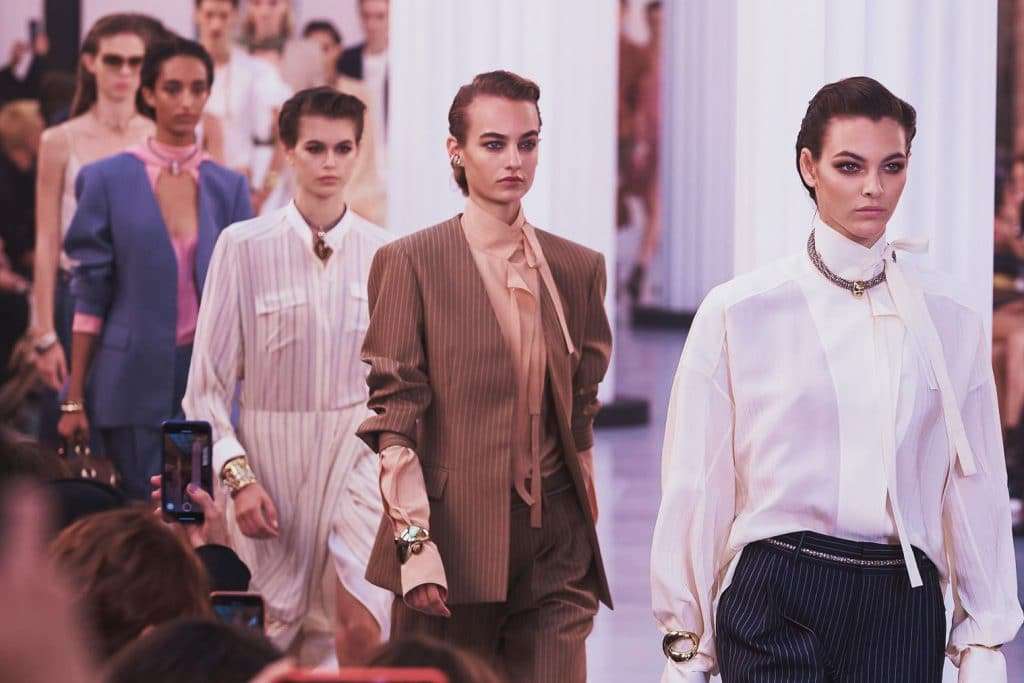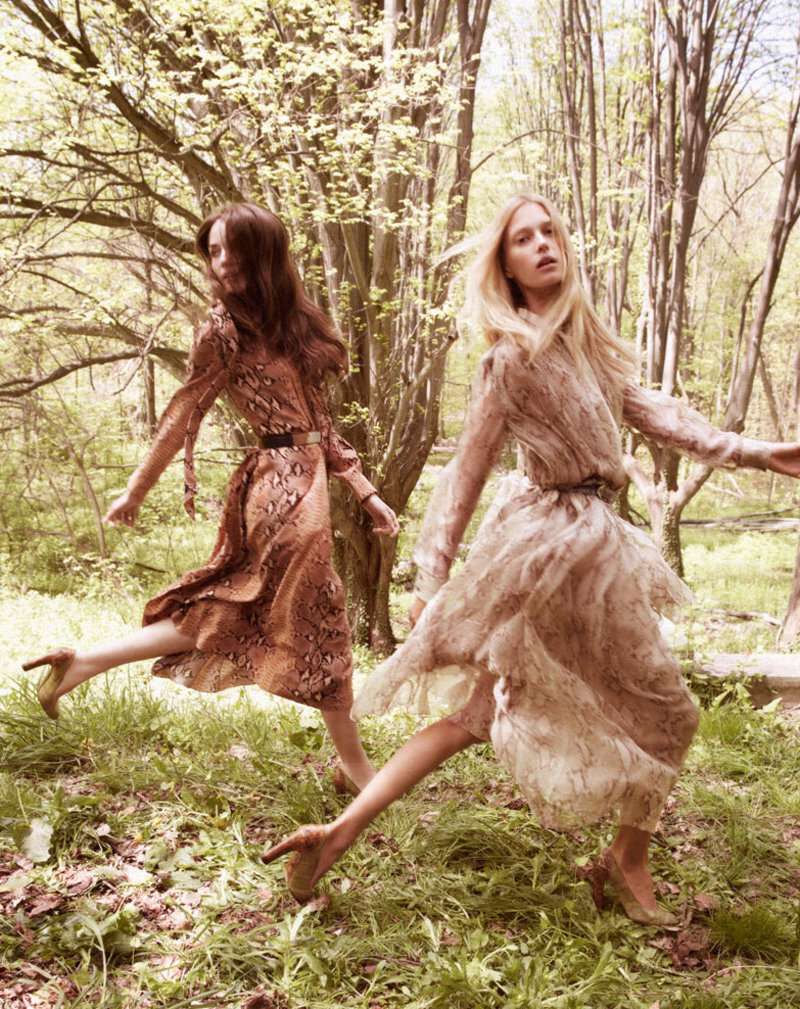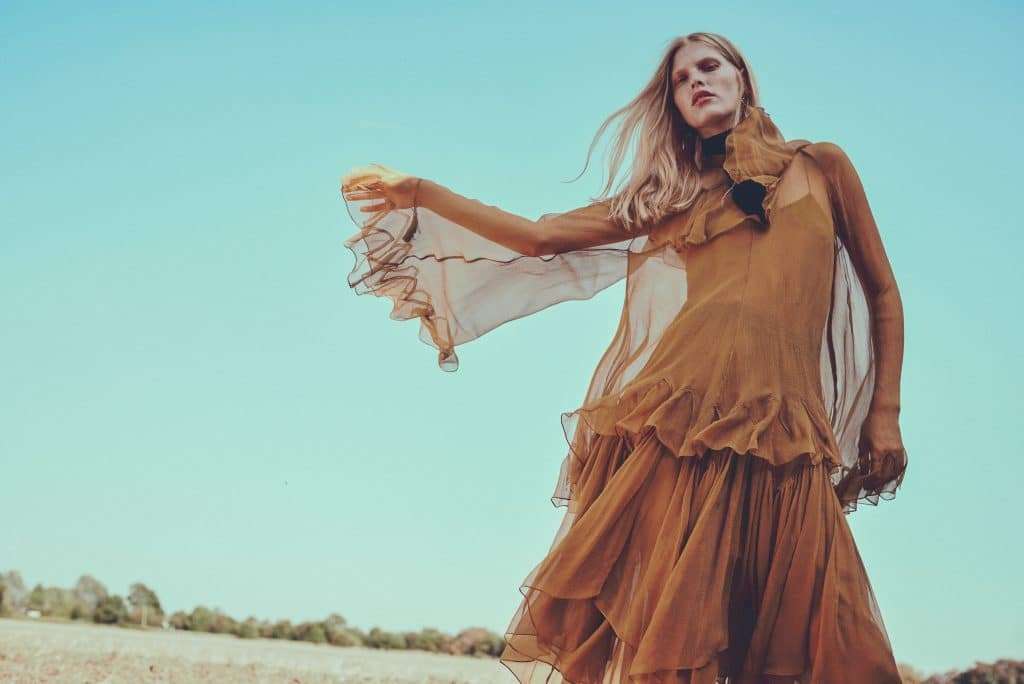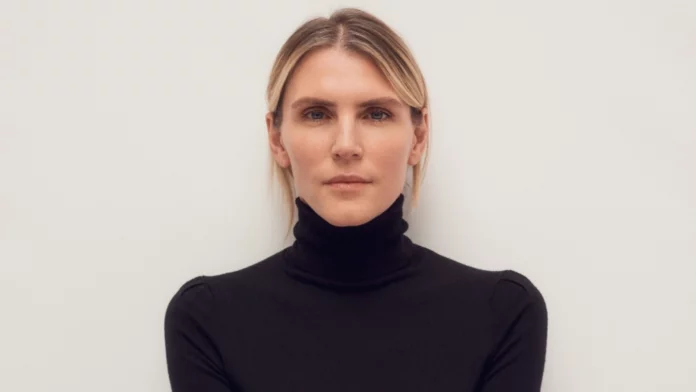Gabriela Hearst’s run at French luxury label Chloé is coming to an end but the designer’s sustainability impact is not going anywhere.
Upon Gabriela Hearst’s appointment as the creative director of the esteemed French fashion house Chloé in December 2020, it was clear that a new, sustainable era was dawning for the seven-decade-old brand.
Hearst’s well-established reputation as a designer who merges aesthetics and ecological responsibility, paired with Chloé’s CEO Riccardo Bellini’s intent to steer the brand towards a purpose-driven course, signaled a bold shift.
Hearst, a Uruguayan designer, has rooted her commitment to sustainability in personal experience. Upon inheriting her family’s ranch, she cultivated an approach to fashion that mirrors the cyclical, regenerative processes of farming: slow-paced, intimate, and focused on handcrafted items. These principles are evident in Chloé’s collections under Hearst’s direction, characterized by made-to-order pieces and limited edition pieces. It’s also evident in the broader sense, such as the label becoming the first luxury fashion house to earn certified B Corp status in 2021.

“A lot of the creativity I have today is from using my imagination [back then],” she told The Guardian in 2022. “Imagination is all problem-solving, right? On a ranch you have to use it a lot; you can’t just bring in an expert if something doesn’t work. That time taught me that essentially quality comes from a utilitarian perspective… and even in a humble environment there is high quality, because everything is made to last a lifetime.”
Hearst’s journey to changemaker is not unlike the aha moments many designers have. “We were making [clothes] for the contemporary market at cheap prices and low quality and there was a total disconnect for me,” she told The Guardian. Following her father’s death in 2011 and inheriting his ranch, a lightbulb went off. “I thought about it and I said, ‘If I am going to put something new out there, it needs to be better made and with a lower environmental impact to anything else.”
Despite dividing her time between the U.S. and France, Hearst maintains a consistent ethos. Ahead of COP26, the designer spoke about shifting the climate crisis to a “climate success.” For her that meant an intense assessment of her label, Hearst, as well as Chloé’s impact, particularly the use of fossil fuels, overconsumption, and environmental restoration.
At the COP26 meeting in Glasgow, Hearst joined artist Dustin Yellin and chef Daniel Humm to underline the essential roles of artists and scientists in tackling the climate crisis. Her belief in the power of ingenuity to effect change is a beacon of hope in an industry often criticized for its environmental impact.
“We live in a (world) that is overproducing things that we don’t need,” she said. “What is this product doing to these three points [fossil fuels, overconsumption, and environmental restoration]? Is it saving water? Is it using less fossil fuels? Can we transport it by boat (instead of plane)?”

In just three years, Hearst has elevated Chloé’s awareness about the urgent need for fashion to pivot toward more sustainable practices. Luxury labels have long led the way in terms of slow fashion and craftsmanship, but Hearst alongside changemakers like Stella McCartney and the late Virgil Abloh, helped the industry to reimagine luxury’s very definition. Hearst, like her contemporaries, has made the transformation seamless; sustainability is not a compromise, it’s a natural extension.
This commitment was evident in her first collection for Chloé, which featured a partnership with the Sheltersuit Foundation, a non-profit that creates outerwear for homeless people from recycled materials. In a novel initiative, for each backpack sold, two sheltersuits would be created for those in need.
This collection also marked a significant increase in the use of lower-impact materials compared to the previous year, including the elimination or recycling of polyester and viscose, the use of organic denim, and the repurposing of vintage bags.
Hearst’s second collection introduced the sub-brand Chloé Craft, emphasizing handcrafted products by independent artisans and eco-conscious methods for mass-produced items. This collection was showcased in Paris alongside the Seine, with guest seating constructed by Les Bâtisseuses, a French organization teaching ecological construction to refugee women.
Hearst’s unique approach distinguishes her in an industry often criticized for superficial environmental initiatives. Her motivation to address the climate crisis springs from personal experience, notably a trip to drought-stricken Kenya with British charity, Save the Children.
The impact Hearst has had on Chloé and the industry at large have earned her the Fashion Council of America’s Womenswear Designer of the Year in 2020 (the fashion equivalent to the Oscars) and named a Leader of Change at the British Fashion Awards, among other recognitions.

But the impact she’s most hoped for is in how the label measures itself moving forward.
“Every time we launch a new product, we ask ourselves how we can decrease that
environmental impact: How can we use the power of our sourcing to create a larger value for our communities and stakeholders,” Riccardo Bellini, chief executive officer of
Chloé, told WWD earlier this year in the first joint interview with Hearst. “What unites us, especially in those difficult moments, is this shared conviction and shared ambition to prove something that today does not exist.”
And Hearst was quick to clarify that change cannot happen from one person, she said. “It’s the machine that has to change and be willing to change. So the CEO, the creative director, the head of production, the head of sustainability — everyone.”
The label has expanded its sustainability team since Hearst’s arrival — at that time it was just one person, now it’s more than ten, she told WWD. Materials have gone more sustainable in each collection as have considerations across all areas of the label’s operations. “[W]e’re a business that is proving that we can be successful and doing good at the same time — that you do not have to compromise on the social component, or on respect to the environment.”
Related on Ethos:


